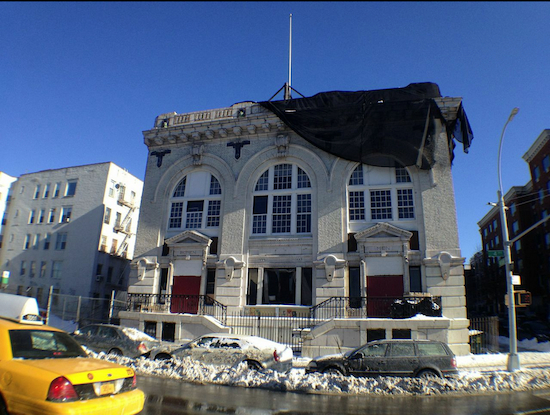Whither the Lyceum?
Eye On Real Estate

The building on the corner is the Lyceum, a landmarked Park Slope arts and events space that was sold in a foreclosure auction. Eagle photos by Lore Croghan
This is a lamentation for the landmarked Lyceum.
The Park Slope arts and events space that was a Bringer of Jollity (to borrow a phrase from a Gustav Holst orchestral suite) and a dose of culture to a swath of Fourth Avenue dominated by new apartment buildings is in the hands of a court-appointed receiver.
The stately neo-Renaissance building at 227-231 Fourth Ave., which was originally constructed as Public Bath No. 7 in 1906-1910, was sold in a foreclosure auction — and the purchaser recently announced plans to turn it into condos.
